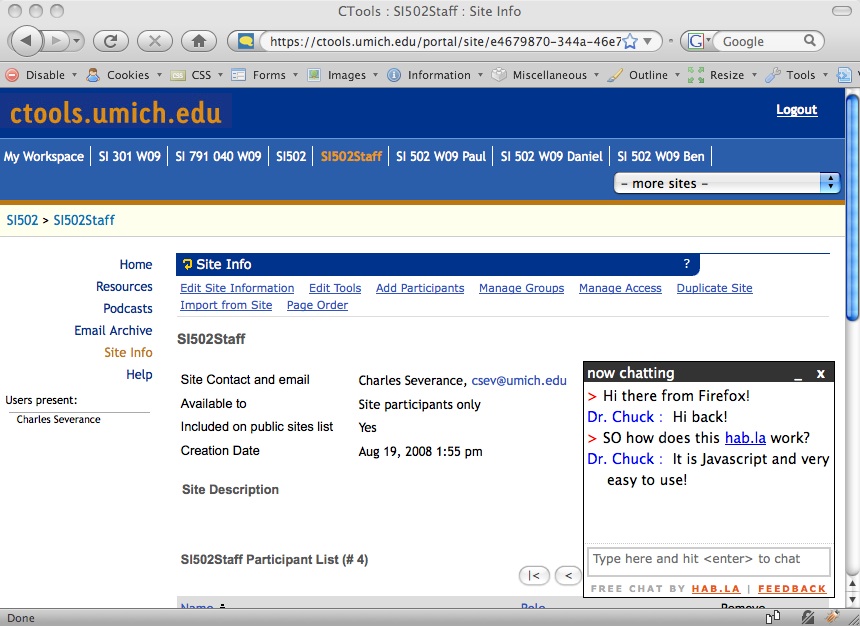Over the weekend I was writing some code in Google AppEngine and had a need to loop through all of the incoming request parameters so automatically update the contents of a model when there were request parameters which had the same name as the model attributes.
When I wrote the very first version of the AE chapters for the class – I had this bit about dumping parameters in one chapter. In the rewrite to send the book to O’Reilly, I felt that this detail was too much so I cut it out about a month ago. I also cleaned up old copies of the chapter on my hard drive and on the appenginelearn.com site.
So on Saturday, I am sitting here peeved that I had this all figured out once and had even written it up once – exactly what I wanted – and then lost it.
I figured that I had researched this once before – so I could figure it out again. I remember that there was no real documentation and I had to write stuff like dir() to hunt through methods. It was painful but I figured I could do it in an hour.
So I typed the following into Google:
appengine looping through request variables
I looked at the text of the second hit and it looked promising. Then I noticed the word “Michigan” in the text and then I noticed that it was *my chapter*. The lost chapter. So I clicked on the link (the PDF) and scrolled down and had my answer in about 45 seconds!
I had forgotten to remove the copy on my Michigan personal AFS space – which I had used while teaching the class – Google had found it, indexed it and knew *somehow* that it was what I needed.
Sweet!
